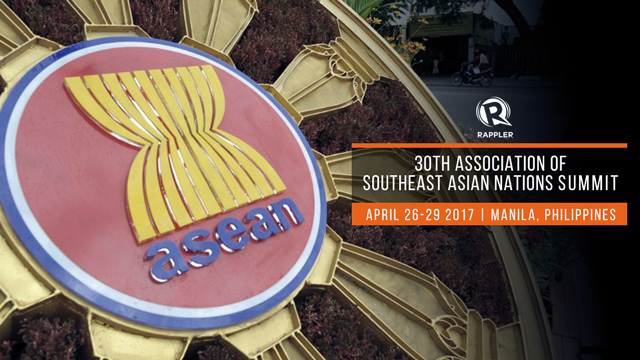The 10-countries of the Association of Southeast Asian Nations could form the world’s fourth largest economy by 2030 though work is needed to help small companies and reduce trade barriers, Malaysia’s Prime Minister Najib Razak said Friday.
Under the theme “Partnering for Change, Engaging the World”, this year’s ASEAN meetings coincide with the 50th anniversary of the regional grouping, and are expected to focus on closer cooperation and greater reforms to accelerate economic integration in the region, news outlets reported.
The 30th Association of Southeast Asian Nations Summit began its preliminary sessions in Manila, the capital of Philippines on Wednesday amid tight security.
Philippines President Rodrigo Duterte will chair the summit on Saturday. The leaders of 10 member nations (Malaysia, the Philippines, Brunei, Cambodia, Indonesia, Laos, Myanmar, Singapore, Thailand and Vietnam) would also discuss issues including regional security, piracy, cross-border kidnappings and the South China Sea dispute.
Najib told a business forum on the sidelines of a summit that the combined size of the group’s economies will grow to $9.2 trillion by 2050, AP reported.
He said more optimistic forecasts see that happening as early as 2030, turning the region into the world’s fourth biggest economy after the US, EU and China. As of Nov. 2015, the region’s combined economy was nearly $2.7 trillion, ranking 7th largest in the world, he said.
Growth is crucial to ensure prosperity can be shared, Najib said. Some ASEAN members, like Singapore, are already affluent, but others, such as Myanmar and Laos, lag far behind.
Najib urged that ASEAN members bring average tariffs to zero or near zero from the 4% average seen in 2015. He also decried an increase in “non-tariff barriers”, such as quotas and excessively onerous import regulations, saying the number of such measures had risen to nearly 6,000 in 2015 from about 1,600 in 2000.
Expanding e-commerce would be especially helpful to small companies. Retail e-commerce transactions in ASEAN countries currently average just over 1% of total retail spending, compared to more than 10% in developed economies, suggesting huge potential for growth, Najib added.
Need for a Common Position
The only way the ASEAN can stand up to Asian giant China is if member nations take a "common stand" on the dispute in the South China Sea, Indonesian President Joko “Jokowi” Widodo emphasized.
"South China Sea is one of the issues that we need to solve immediately. In the previous meetings, there are still differences between ASEAN member states," he said in an interview on ANC aired on Friday. "I think we need to have a common stand. The most important is that ASEAN internally needs to have a mutual agreement on this issue," he added.
He said while the dialogue between ASEAN and China is essential to build confidence among member nations, the ASEAN can only engage China in a dialogue after it has agreed on a common position on the South China Sea issue. "Then and only then can we communicate with China," Jokowi said.


